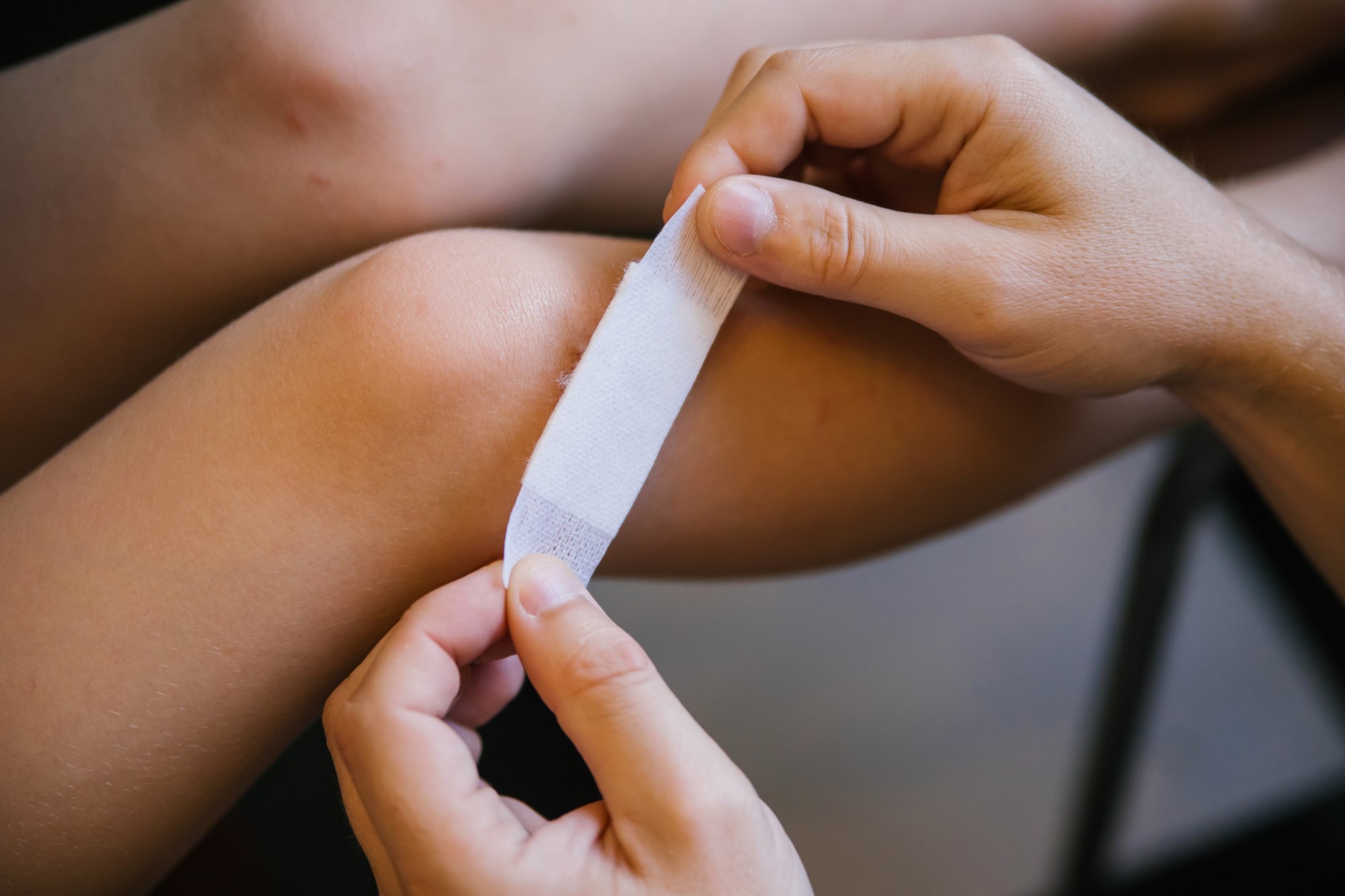First Aid and Wound Care
From the moment your child takes their first steps, they are bound to have the odd fall as they learn, develop and play. Even as adults, it’s not uncommon to experience the occasional cut or graze. Whilst the body heals itself quickly, applying simple first aid allows minor wounds to heal more quickly than an infected wound.
Why is first aid important?
When our skin is healthy and intact it provides a natural barrier to germs. But when our skin is broken, for example due to a cut, graze or bite, the door is open for germs to enter our bodies. The moist, warm and nutritious underlying tissue then becomes the ideal environment for bacteria to establish themselves and grow.
Wounds become infected when
- Germs that normally live harmlessly on our bodies enter the wound from the surrounding healthy skin
- The wound gets contaminated with germs from dirt, animals or people during injury
- Airborne germs land on a wound
- A wound is touched with unwashed hands or other things that are contaminated with germs and bacteria.
Whether a wound becomes infected and how quickly depends upon a number of factors. These include the type of contaminating bacteria, the type of wound, the depth of the wound, the location, the level of blood supply to the area, the presence of contaminating material and the level of the body’s immune response to the invading microorganisms. Some wound infections can be severe and we can’t always rely on antibiotics to treat them (such as infections caused by MRSA). It is recognised that one of the outcomes of a wound becoming infected is that they fail to heal. Using antiseptics, therefore, is a valuable precaution to help prevent infection and any subsequent delay in wound healing.
Simple first aid to prevent infection in minor wounds
- Clean your hands before and after touching a wound using an antimicrobial soap, or an alcohol-based hand sanitiser
- Clean the wound with clean running water, an antiseptic wash, or correctly diluted antiseptic liquid
- Gently dry the skin around the wound
- Apply an antiseptic cream to kill remaining germs and bacteria
- Protect the wound by covering it and change the dressing regularly
- Remember good hand washing hygiene and wash your hands afterwards.
If a wound won’t stop bleeding, shows signs of infection such as redness or swelling, seek medical attention immediately.
